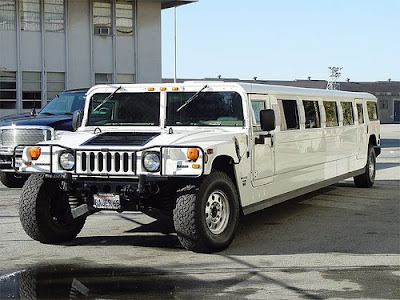 LSAT Blog reader Vicky recently wrote with the following:
LSAT Blog reader Vicky recently wrote with the following:"I know you have already covered the sufficient and necessary conditions quite extensively, but there are still many (myself included) who are still stymied by it.
If you feel that the explanation I provide below is accurate and acceptable, posting it as an introductory Logical Reasoning topic might help other LSAT students."
I found Vicky's explanation to be useful and have included an edited version of it below.
Please thank Vicky in the comments for sharing her tips with everyone!
Vicky's Tips on Understanding Sufficient / Necessary Conditions:
Dealing with the concepts of Sufficient and Necessary conditions becomes a whole lot easier if I think of them in mutually-exclusive terms.
I consider the introduction of a new entity, the outcome/objective of these conditions, and, in some instances, with the sufficient condition being a specific example/small part of the bigger necessary condition.
For example, the limo example from Steve's blog post titled, LSAT Logic: Sufficient vs. Necessary Conditions: If I take a limo somewhere, I'll go somewhere
My interpretation is this:
- go somewhere = outcome/objective
- take a limo somewhere = sufficient condition
- traveling somehow, by any means possible, (such as: walk, limo, spaceship, teleport, have a friend wrap you up in a bouncy material and roll you across town to your destination...) = necessary condition
- taking a limo somewhere is a form of traveling. However, taking a limo somewhere is not the only form of traveling.
As such, the sufficient condition is a specific example/subset of the necessary condition. Traveling in general doesn't require that you take a limo somewhere. Like Darth Vader and Star Wars. Like Superman and superheroes. Like LSAT and traditional law school admission. (Do I need to seek professional help here?)
From knowing you got somewhere, we know/safely assume the necessary condition is met - you traveled. However, we can't automatically assume that you took a limo somewhere
From knowing that you took a limo somewhere, we can safely assume you got somewhere - the outcome is met. This also automatically satisfies the necessary condition of traveling.
The necessary condition is automatically met when the sufficient condition is met.
If the necessary condition is not met, the sufficient condition is automatically not met.
The necessary condition might be met without the sufficient condition being met.
This is relevant to page 25 of the LSAT SuperPrep / pages 30-31 of the LSAT Handbook. On these pages, LSAC says there are only 2 possible inferences that can be made from a statement that includes a necessary condition and 2 from a statement that includes a sufficient condition.
NC = necessary condition
SC = sufficient condition
NC #1. Infer from knowing that the NC is NOT met, the outcome does NOT occur = Not NC --> not outcome
NC #2. Infer from knowing that if the outcome occurs, the NC is met = outcome --> NC
SC #1. Infer from knowing that if SC is met, the outcome occurs = SC --> outcome
SC #2. Infer from knowing that if the outcome does not occur, the SC is not met = Not outcome --> not SC
***
“If I take a limo somewhere, I'll go somewhere.”
Scenario 1: I did not travel. So I didn’t go somewhere. I obviously didn’t take a limo somewhere
Not NC --> Not outcome --> Not SC
Scenario 2: I took a limo somewhere. So I went somewhere. I've obviously traveled.
SC --> outcome --> NC
Photo by livenature



This is very useful. Thank you Vicky for providing it, and thank you Steve for editing and posting it.
ReplyDeleteLoving the explanation. My name is Vicky too (exact spelling). So awesome that there is a smart Vicky out there studying for the LSAT. Thanks again Vicky!
ReplyDelete~Vicky Chan
"The necessary condition might be met without the sufficient condition being met."
ReplyDeleteCould someone please elaborate in this? I don't quite understand this!
Thank you kindly : )
You can travel somewhere without doing so by limo. Traveling somewhere is the necessary condition. Traveling by limo is a sufficient condition but it is not the ONLY possible sufficient condition. You could travel somewhere by bus or walking. Therefore, you can have the necessary condition without the sufficient condition (you can travel without traveling by limo).
DeleteLogic truth tables helps simplify this (for me, at least).
ReplyDeleteSufficient --> Necessary
True --> True
False --> True
False --> False
Basically, if the sufficient is true, then the necessary MUST be true.
If I take a limo somewhere (true), then I have gone somewhere (true).
If the sufficient is false, the necessary could be true OR false.
If I did NOT take a limo somewhere (false), then I have gone somewhere (true) [by walking instead].
If I did NOT take a limo somewhere (false), then I have NOT gone somewhere (false) [because that is the only way I travel].
Notice how the necessary can be TRUE, and the sufficient can be TRUE or FALSE.
When the sufficient is TRUE, the necessary is always TRUE.
this is really helpful for me thanks!
DeleteThank you Vicki!!
ReplyDelete